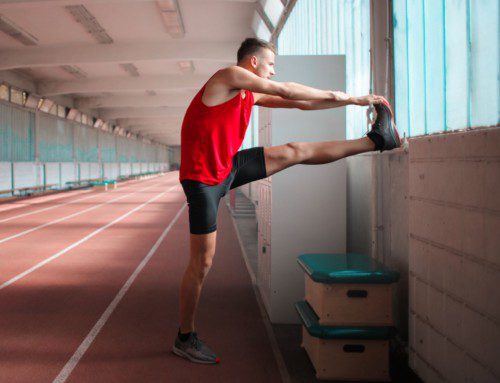Have you ever experienced a hamstring injury? This injury can be debilitating and affect everyday functional activities such as walking or getting up from a chair. Fortunately, hamstring injuries can be rehabilitated conservatively, without the need to go under surgery!
Some important factors that will set you up for success in rehabilitating your hamstring injuries include: 1) location of the injury, 2) onset time, and 3) type of loading [1].
- Location of the Injury
The higher the injury site is, (the closer it is to your glutes), the longer it will take to recover. The higher the injury is, the more likely the tendon is affected. Tendons typically get less blood flow than the muscle itself, which may be why these injuries take longer to recover. - Onset Time
The longer you wait to address your hamstring injury (or any injury), the longer it takes for the injury to heal. It is recommended to start performing loading exercises to the hamstrings 5 days after the onset of injury [2]. - Type of Load
Exercising this region is important, but specifically, performing eccentric exercises positively affects healing time. Eccentric exercises require the muscles to generate less force compared to the weight that’s being moved. It is a slowed and controlled movement that allows the muscle to be under tension for longer periods of time.
Eccentric Exercises Recommendations
The exercise recommendations used are from the Askling L-protocol [1]. In the following video sets of hamstring rehab exercises, the Askling L-protocol suggests 3 sets x 6-10 reps.
1 | The Extender – 3 sets x 6-10 reps
2 | The Diver – 3 sets x 6-10 reps
3 | The Glider – 3 sets x 6-10 reps
If you are recovering from a hamstring injury and would like guidance on how to return to your activity and decrease pain, feel free to reach out to one of our physical therapists at SetPT here. Happy Moving!
Sources:
- Askling, C. M., Tengvar, M., Tarassova, O., & Thorstensson, A. (2014). Acute hamstring injuries in Swedish elite sprinters and jumpers: a prospective randomised controlled clinical trial comparing two rehabilitation protocols. British journal of sports medicine, 48(7), 532–539. https://doi.org/10.1136/bjsports-2013-093214
- Hickey, J. T., Timmins, R. G., Maniar, N., Rio, E., Hickey, P. F., Pitcher, C. A., Williams, M. D., & Opar, D. A. (2020). Pain-Free Versus Pain-Threshold Rehabilitation Following Acute Hamstring Strain Injury: A Randomized Controlled Trial. The Journal of orthopaedic and sports physical therapy, 50(2), 91–103. https://doi.org/10.2519/jospt.2020.8895





